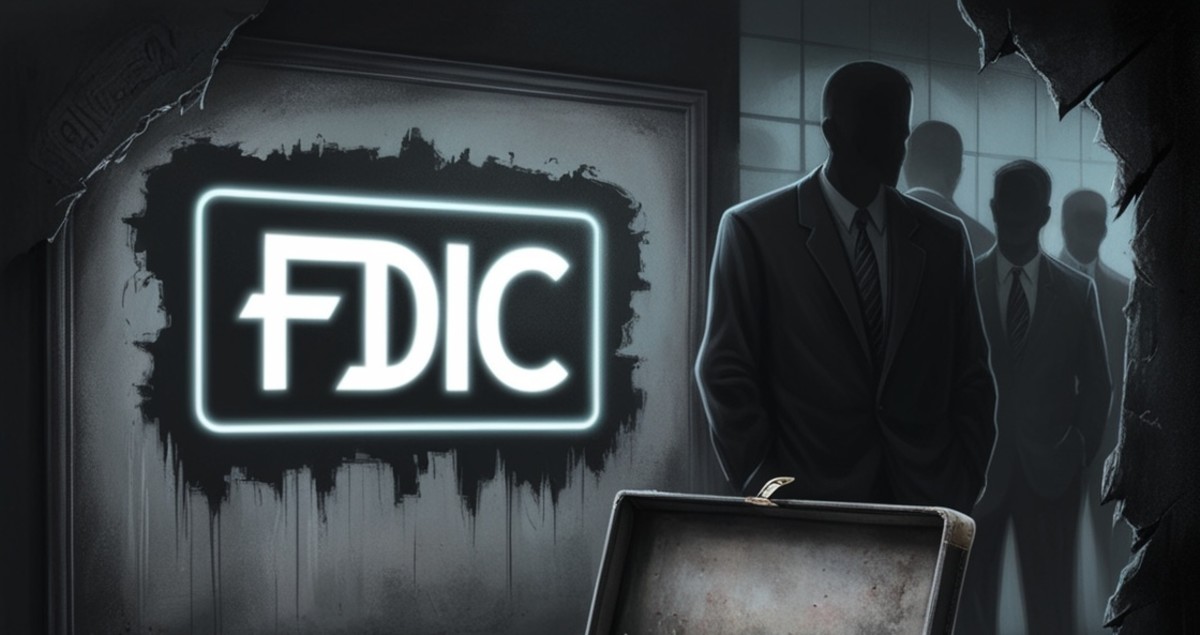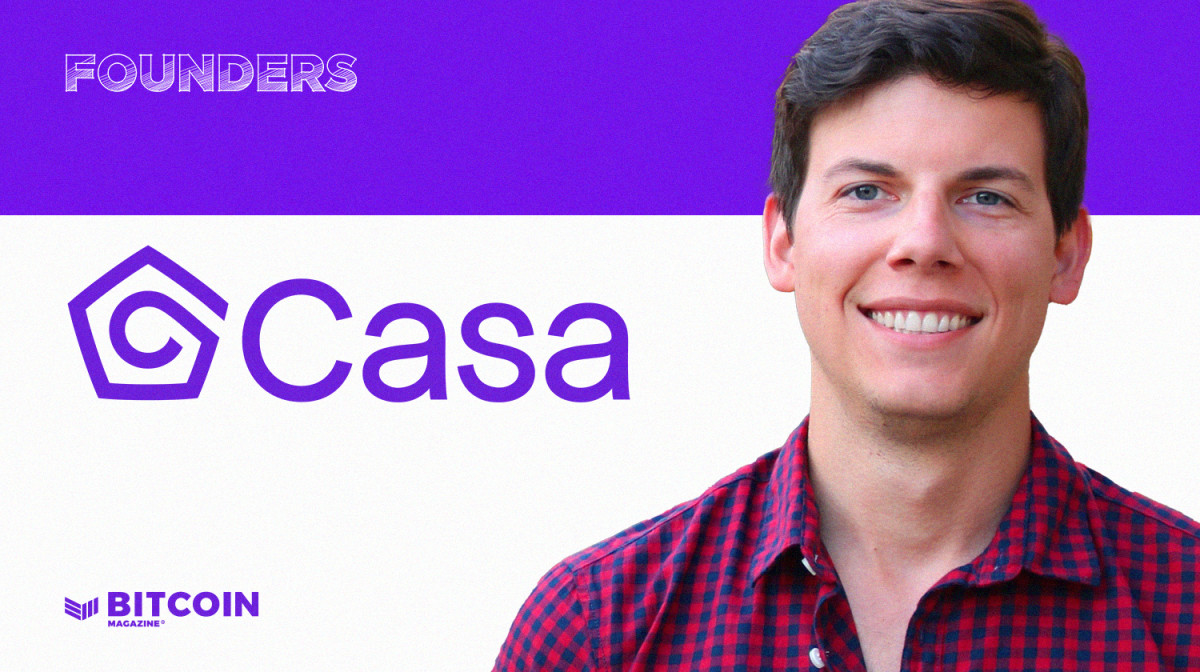Month: November 2024
Good Riddance, Martin Gruenberg
Follow Frank on X.
Martin Gruenberg, Chairman of the U.S. Federal Deposit Insurance Corp. (FDIC), announced today that he’ll be stepping down on January 19, 2025, one day before Trump takes office.
I’d like to take this opportunity to tell Mr. Gruenberg not to let the door hit him on the way out.
The FDIC chair was one of the key players behind Operation Chokepoint 2.0 (as well as the first Operation Chokepoint), which included the unlawful debanking of a number of Bitcoin and crypto companies, which almost spurred a global financial crisis.
During this tenure, Gruenberg directed the FDIC to take unlawful action against banks that served the Bitcoin and crypto industry seemingly because the industry was politically unfavorable.
Gruenberg said he’d be leaving his post in May of this year, after reports of sexual harassment, bullying and discrimination occurring within FDIC under his watch surfaced but didn’t offer a date for his departure until today.
A number of prominent voices in the Bitcoin and crypto industry spoke out against Gruenberg, over the past two years. Most prominent among them was Castle Island Ventures partner Nic Carter.
The resignation of choke point Marty was bigger news than the ETH ETF. Here’s why: https://t.co/g1KVX4ASMn
— nic carter (@nic__carter) May 21, 2024
While Gensler will likely be remembered as the most disliked regulator by the Bitcoin and crypto industry under the Biden Administration, Gruenberg will be a close second.
As we move forward with a new administration that has pledged to be more fair to the Bitcoin and crypto industry, let us take a moment to celebrate the exit of Gruenberg, a corrupt bureaucrat who tried and failed to stop a burgeoning industry by abusing his power.
This article is a Take. Opinions expressed are entirely the author’s and do not necessarily reflect those of BTC Inc or Bitcoin Magazine.
US Strategic Bitcoin Reserve FOMO Is Being Horribly Oversold
Let’s get one thing out of the way – The United States already holds more bitcoin than any government in the world.
Follow Rizzo on X.
https://x.com/pete_rizzo_/
While this data is true, you wouldn’t exactly know this from the obscene amounts of FOMO being generated by industry lobbyists on social media.
On X, BTC Inc CEO David Bailey, has been pushing for an Executive Order by President Donald Trump that would put this in place on day one, while Satoshi Action Fund founder Dennis Porter has been stoking state-level enthusiasm, pledging to get states active in purchasing before the federal government as some act of patriotic frontrunning.
Look, I’m into the Strategic Bitcoin Reserve. Yes, the United States needs a long-term plan for the dollar, one that finds it (in all likelihood) giving up its status as a global reserve currency.
Yes, the U.S. should be actively boosting the Bitcoin market and industry. But, this sky-is-falling approach just couldn’t be more at odds with all reason.
There are no other governments buying Bitcoin, nor with any (public) plans to. The next largest state holder of Bitcoin is apparently China, which has formally banned its use.
Of the countries that are actively buying Bitcoin with intent – Bhutan has just over 10,000 BTC, while El Salvador is stuck around 6,000 BTC. Neither are going to purchase more Bitcoin than the U.S. government already has – nor does either have a widely popular money printer.
Full stop – even if the U.S. government didn’t buy Bitcoin for a decade, its stockpile would be sizable. Sure, you may argue that it’s about sending a message, about showing leadership in the world, but there are many ways this can be done without blowing political capital.
Is a Strategic Reserve more important than regulation that will actually ease barriers to our industry? That will empower businesses to actually grow the sovereign use of the currency?
Let’s not forget the horrible taxation laws that make bitcoin holders think twice before using bitcoin for purchases..
All this is to say, Strategic Bitcoin Reserve advocates shouldn’t overplay their hand – a lot can be gained just by getting the U.S. government to stop selling the Bitcoin it already has, and there are arguably bigger gains to be had, or at least much worse laws to erase.
Would it be great if the U.S. government started buying Bitcoin? Surely. The industry has political capital to cash in, but let’s use it to spread Bitcoin adoption, not just pump our bags.
This article is a Take. Opinions expressed are entirely the author’s and do not necessarily reflect those of BTC Inc or Bitcoin Magazine.
Stablecoins Are Not Your Friends
Stablecoins are often pitched as a stopgap method, or a friendly tool for people in the developing world who cannot handle the volatility of Bitcoin. They are framed as something complementary to Bitcoin, not in competition with it. Nothing could be further from the truth.
Bitcoiners have commonly used the meme of a trojan horse to justify many things over the years, rationalizing many shortcomings and compromises made over time as what is necessary to sneak Bitcoin into the legacy system to ultimately take over and win. That is exactly what stablecoins are, except in the reverse direction.
Stablecoins are the trojan horse into Bitcoin.
Bitcoin’s volatility makes using it challenging if you do not have the net worth to weather it, but there are mechanisms to handle this. Centralized schemes like Stablesats by Blink have been built to use bitcoin collateral to lock in a dollar value without needing to actually hold dollars. Discreet Log Contracts (DLCs) offer another mechanism for accomplishing the same thing in a decentralized fashion.
Instead we are propping up the US Dollar. Stablecoins are a solution to volatility, but they are a non-Bitcoin native one. They are the US Treasury’s trojan horse into the Bitcoin space. They do more to control and prop up the dollar than they do to “help” Bitcoiners handle the issue of volatility, which can be done while only holding bitcoin.
Stablecoins give the Treasury a new lifeline to sell treasury bonds. Foreign countries have lowered demand and sold existing treasuries for some years now, and stablecoin issuers have stepped up to pick up the slack. The bigger demand grows for stablecoins, the more of a drop in foreign government demand for treasury bonds the US Government can handle. At a time where BRICS is planning more and more to shift away from their dependence on the US dollar, stablecoins represent a vehicle to ameliorate this issue.
They also, unlike Bitcoin native solutions such as DLCs, present a security risk to holders. To my knowledge, aside from the Liquid Network, every network stablecoins are issued on come with a seize and freeze functionality built into the smart contract the issuer uses to create them. Almost all stablecoins support the arbitrary freezing and seizure of users balances on the different networks they circulate on.
Surveillance is another aspect of stablecoin proliferation. The more that dollar stablecoins are adopted around the world, without needing to politically convince any government to officially dollarize I might add, the more the US Government’s ability to directly surveil foreign financial activity expands. Chainalysis and other companies become a de facto government surveillance system for foreign financial activity, with no need to subpoena or gather records first. It’s all right there on the blockchain.
All the while, it propagates the idea that “blockchain” is a useful technology disconnected from Bitcoin, pushing the idea to your average person that bitcoin is simply an asset like gold to invest in. It creates a psychological narrative of “invest in Bitcoin, use your surveillance money when you need to spend.”
Overall stablecoins are going to be one of the most epic unforced errors that have occurred in this entire ecosystem. People need to wake up before it becomes embedded so deeply into their lives, and the financial world in general, that it becomes difficult to disentangle ourselves from.
People should be spreading and building on Bitcoin, a money built to enable freedom and sovereignty, not these cheap imitations called stablecoins that are nothing more than an extension of the surveillance and tyranny of the legacy financial system.
This article is a Take. Opinions expressed are entirely the author’s and do not necessarily reflect those of BTC Inc or Bitcoin Magazine.
Bitcoin Treasury Adoption Surges: Meet the New MicroStrategies
MicroStrategy’s corporate Bitcoin treasury strategy is taking off. Public companies are FOMO’ing into bitcoin. It’s almost as if Trump’s pro-Bitcoin stance is giving companies the green light to stack BTC.
Yesterday alone, seven public companies announced that they have bought or plan to buy bitcoin for their treasury reserves, with one new company committing to purchasing $1 million in BTC today. Crazy, right? It has felt like a minimum of one to two new companies a day are adopting bitcoin as a reserve asset — not to mention all the companies getting bitcoin exposure via the ETFs.
It’s surreal to witness the FOMO from companies adopting a corporate Bitcoin playbook in real time. I mean, Michael Saylor has been preaching this and leading by example for the last four and a half years, and now that we’re almost at $100,000 bitcoin, companies are FOMOing in en masse.
Was it the dramatic increase in bitcoin’s price that catalyzed this surge in more and more companies adopting Bitcoin, the incoming Trump presidency, or are companies finally taking Saylor’s advice seriously after his strategy has proven to be successful? It’s hard to tell — it’s probably a mix of all three.
Beyond the borders of the U.S., other companies are also adopting the MicroStrategy playbook — and reaping the benefits of it. Metaplanet, a publicly-traded Japanese company, went from a zombie company to ranked #29 out of 4,000 listed companies in Japan by trading value since adopting a corporate Bitcoin strategy. Unreal.
Metaplanet ranked #29 out of 4,000 listed companies in Japan by trading value, surpassing much larger market peers such as Itochu and NTT https://t.co/mUgdytMRM6 pic.twitter.com/Xzf66g9o1r
— Simon Gerovich (@gerovich) November 19, 2024
Over the course of the next year I’m expecting this corporate Bitcoin adoption to only increase as the price of bitcoin rises and Trump takes office.
“Welcome to the Bitcoin Standard” — Michael Saylor.
Bitcoin Multisig Company Casa Makes Self-Sovereignty Easy
Company Name: Casa
Founders: Nick Neuman, Jameson Lopp and others
Date Founded: Late 2017
Location of Headquarters: Remote
Website: https://casa.io/
Public or Private? Private
Being self-sovereign isn’t easy — especially if you aren’t technically-minded.
The team at Casa gets this and this is why, for over six years, the company has been helping customers secure their bitcoin in multisig wallets (also referred to as multi-key vaults).
The company was the first to offer an easy-to-use version of such a product that also came with customer support. It was Casa’s plan from the onset to be there for their customers, as this type of support was lacking in the broader crypto industry.
“The service element was what was missing from a lot of solutions out there,” Casa co-founder and CEO Nick Neuman told Bitcoin Magazine.
“People need help doing this stuff, especially for large amounts of money. It was always the plan to support customers, because it was impossible to get support from exchanges or hardware wallets,” he added.
“So, we just took a very support-heavy and user experience focused approach to everything.”
Casa’s approach has paid off, as the company has become a household name in the Bitcoin and crypto space, and has come a long way since Neuman first had the idea for a company like Casa seven years ago.
How Casa Started
It was toward the latter part of the 2017 bitcoin bull run when Neuman had grown tired of his previous work in finance and tech, and found himself down the proverbial Bitcoin (and crypto) rabbit hole. By February 2018, he had an idea for a company and entered himself into a hackathon to attempt to bring the idea to life.
“I participated in the first ETHDenver hackathon,” said Neuman.
“I went in with an idea that I called key split, which was basically taking a private key using Shamir secret sharing and creating a social recovery mechanism,” he added.
“I recruited a couple of people at the hackathon to build it with me, and we ended up winning.”
Neuman quit his job and set out to start a company around this technology he and his team had created. But word had gotten out about his victory at ETHDenver, and the previous CEO of Casa, who was the head of the company before it pivoted to offering multisig wallets, reached out to Neuman, asking him to come on board.
It was after learning that Casa had just recruited Jameson Lopp, self-described “professional cypherpunk” and now Chief Security Officer at Casa, that Neuman decided to join the team.
“I was like, ‘Well, Jameson’s going to be an unfair advantage,’” recalled Neuman with a chuckle. “Instead of starting my own company, I’m going to join.”
Soon after Neuman came on board, Casa retired its then flagship product, the Casa Node, and the company shifted its focus to user-friendly multi-key vaults, a much needed product at the time. Before Casa, multisig software was so complicated that even Neuman himself struggled to use it.
“There was the Armory multisig wallet and the Glacier protocol,” recounted Neuman.
“Glacier wasn’t even software. It was like a giant GitHub repo that you had to follow in order to set up your cold storage. Armory was super janky, too. I remember trying to use it once, and I couldn’t figure it out,” he added.
“We were the first to create multisig that was usable.”
How Casa Works
Casa offers users two main set ups. The first is a five-key vault, which includes three keys on three different hardware wallets, one on the user’s phone (which is backed up securely in the cloud) and one that Casa holds.
This was Casa’s first multisig product, which it rolled out while the company primarily focused on serving customers with a high net worth in bitcoin. Casa learned an important lesson while serving these clients, which was that even if developers create easy-to-use software, people still want an expert there supporting them as they use it — especially if they’re securing a lot of value.
“When you’re dealing with millions of dollars worth of Bitcoin, you really want to have an expert there who helps make sure that you don’t make a mistake,” said Neuman.
Casa’s other main product is for those who might not be sitting on bitcoin whale-type wealth, but who still hold enough bitcoin where a less-than-ideal security setup has the potential to keep them awake at night.
This product is Casa’s three-key vault, which the company brought to market in early 2019. It includes a key on a hardware wallet, a key on the user’s phone (which can be swapped out for another key on a second hardware wallet if the user prefers) and a key that Casa holds.
Casa began offering this setup because it “always wanted to be able to offer great security and usability to as many people as possible,” according to Neuman.
New Casa Services And Features
In the past year, Casa has further broadened the services it offers.
Two weeks ago, it announced its Enterprise Plan, which enables companies to more easily secure their bitcoin treasuries.
“We’ve had businesses using Casa for self-custody for years, but they were always using our retail plans and just making it work,” explained Neuman.
“We changed that, though, because I think corporate treasuries holding bitcoin has been popularized by MicroStrategy. We actually see that as a growing trend that’s worth taking advantage of, and we’re hearing from more Bitcoin companies that are storing bitcoin on their balance sheet that they need help with security,” he added.
This summer, Casa also began enabling users to replace hardware wallets used in their vaults with YubiKeys.
“We see people struggle with hardware wallets all the time, and so we were thought ‘How can we make this simpler?’” said Neuman. “We pieced together a couple of new pieces of technology that have passkey and and YubiKey key capabilities and were able to build something that hadn’t been done before.”
And in March, Casa launched Casa Inheritance, a service that makes it easier for the loved ones of Casa users to access the bitcoin secured in the vaults in the event of a user’s death.
“With Inheritance, we heard from our customers all the time ‘Okay, I feel good about my Casa setup, but I’m worried about what happens if I die,’” explained Neuman. “So, we built that feature to make it super easy for their family to recover the bitcoin in case the main account holder dies.”
Normalizing Multisig
Despite all of the work Casa has done in the last six years, some still have an emotional block when it comes to switching to a multisig setup. Whether it’s because this type of wallet format was more difficult to enable years ago or because it’s understandably anxiety-provoking to make changes to one’s bitcoin security, people seem to drag their feet when it comes to using a multisig setup — even if they really want to — according to Neuman.
“They hear the word ‘multisig’ and they’re like, ‘That’s too hard,’” explained Neuman. “What they don’t realize is that to get started with multisig with Casa, you can use your same hardware wallet, and it is literally the same amount of effort as using a hardware wallet, but you significantly improve your security by doing it.”
Neuman thinks that more people will come around and that multisig will become more widely adopted, especially during a bull market.
“It takes the price of bitcoin going up where people suddenly have more value to secure,” said Neuman. “And it takes people hearing from their friends ‘Yeah, I’m doing multisig and it’s not as hard as it sounds.”
For those that do get the urge to try Casa, the company is allowing people to try the service at no charge for a month.
Neuman feels that as more users come on board, it will not only benefit them, but potentially the industry at large as well.
“If we can make it out of this bull market without another massive blow up like FTX because we’ve helped more people self-custody in a way that they feel good about, that feels like a real win to me.”
More weakness ahead for Canadian dollar – Jefferies
Post Content
CANADA FX DEBT – Canadian dollar strengthens, benchmark yield slips
Post Content
Dollar edges higher; Trump’s political appointments in focus
Post Content
Asia FX muted, dollar dips from 1-year peak as rate cut bets persist
Post Content
Why $100,000 Bitcoin Is Right Around The Corner
If you have been following Bitcoin news today, like I have, you can not be more bullish on Bitcoin. Seriously, what a time to be alive!
Just today:
MicroStrategy purchased another 51,780 BTC for $4.6 billion and announced its plans to raise $1.75 billion to buy more bitcoinSemler Scientific bought another 215 BTC for $17.7 millionGenius Group launched its Bitcoin treasury by purchasing 110 BTC for $10 millionMARA Holdings announced a $700 million raise to buy more BTC Metaplanet issued ¥1.75B debt offering to buy more BTCGlobal healthcare group Cosmos Health adopted BTC as a treasury reserve asset
Insane, right?
The corporate Bitcoin adoption is going absolutely parabolic. The race among public companies to stack the most satoshis has kicked into hyperdrive.
Some other news:
Donald Trump is meeting with Coinbase CEO Brian Armstrong and is expected to discuss appointmentsDonald Trump’s media $DJT in talks to purchase crypto trading platform BakktOptions trading on BlackRock’s spot Bitcoin ETF could be listed as soon as tomorrow
It’s only Monday, and my head is already spinning! With this tidal wave of positive adoption, I’d be downright shocked if we don’t blast through $100,000 per Bitcoin this week.
I expect a flood of more bullish news and serious FOMO buying pressure this week. Seriously, tighten your seatbelts, folks—with this momentum, Bitcoin hitting a hundred grand is coming sooner than you imagined!
This article is a Take. Opinions expressed are entirely the author’s and do not necessarily reflect those of BTC Inc or Bitcoin Magazine.









